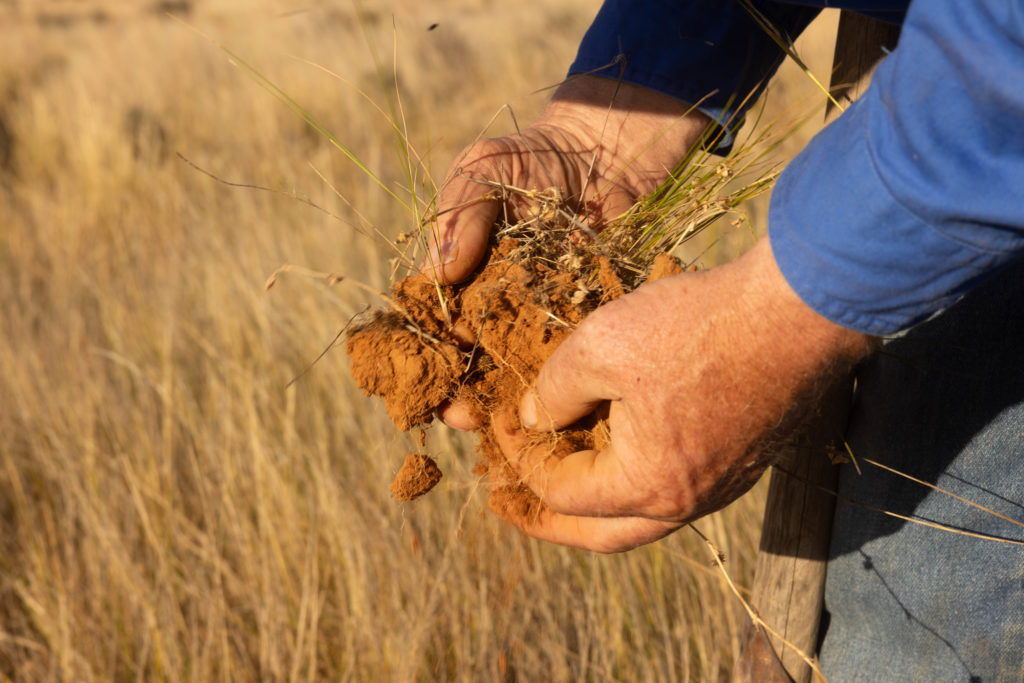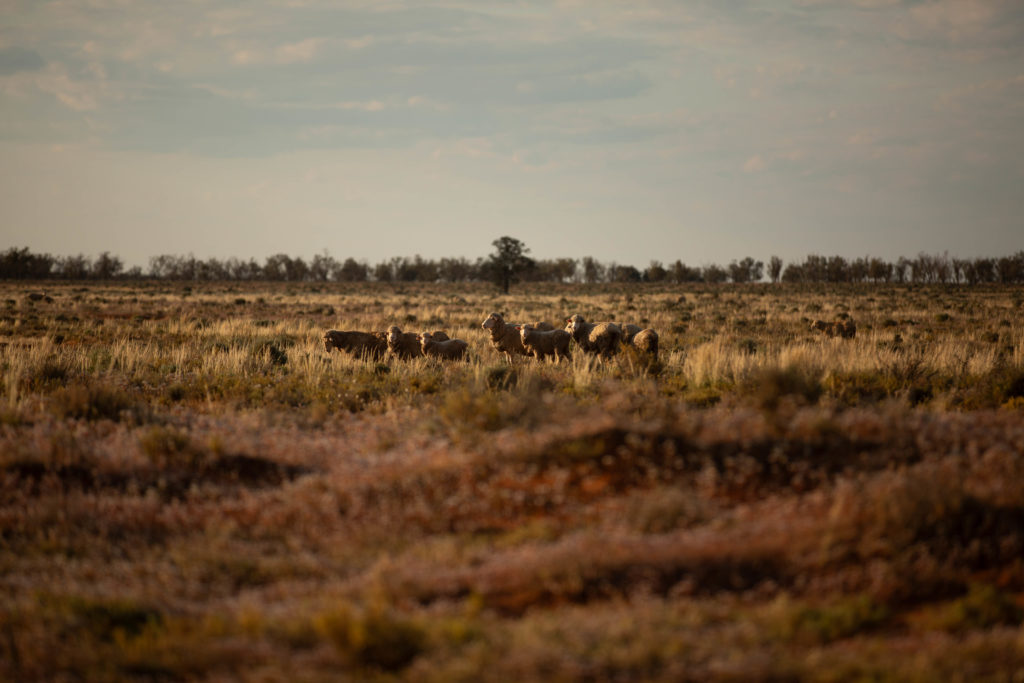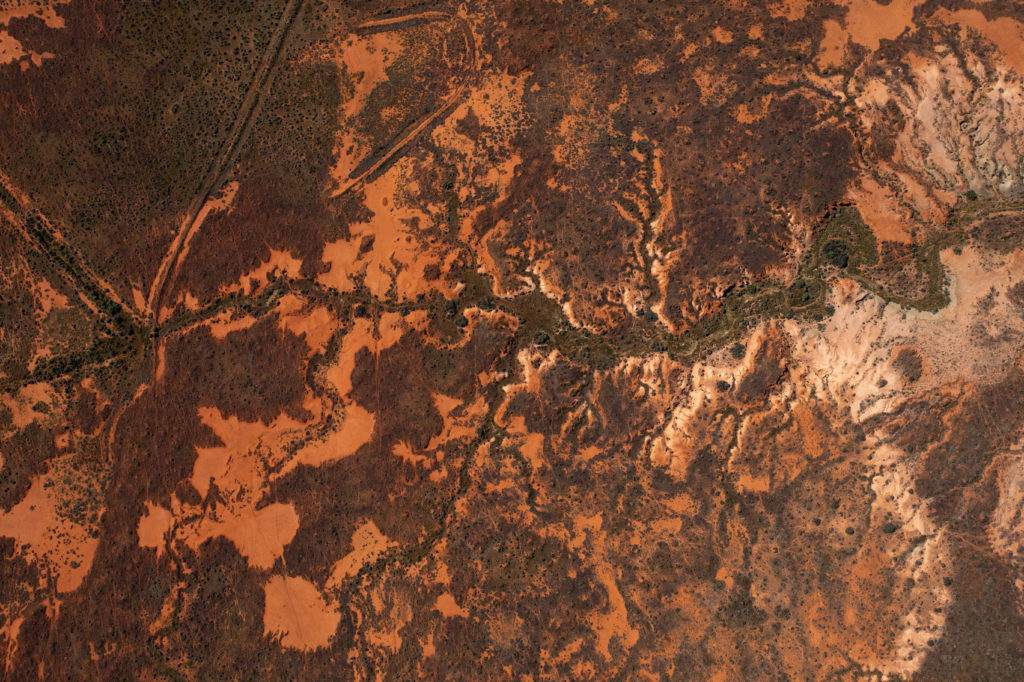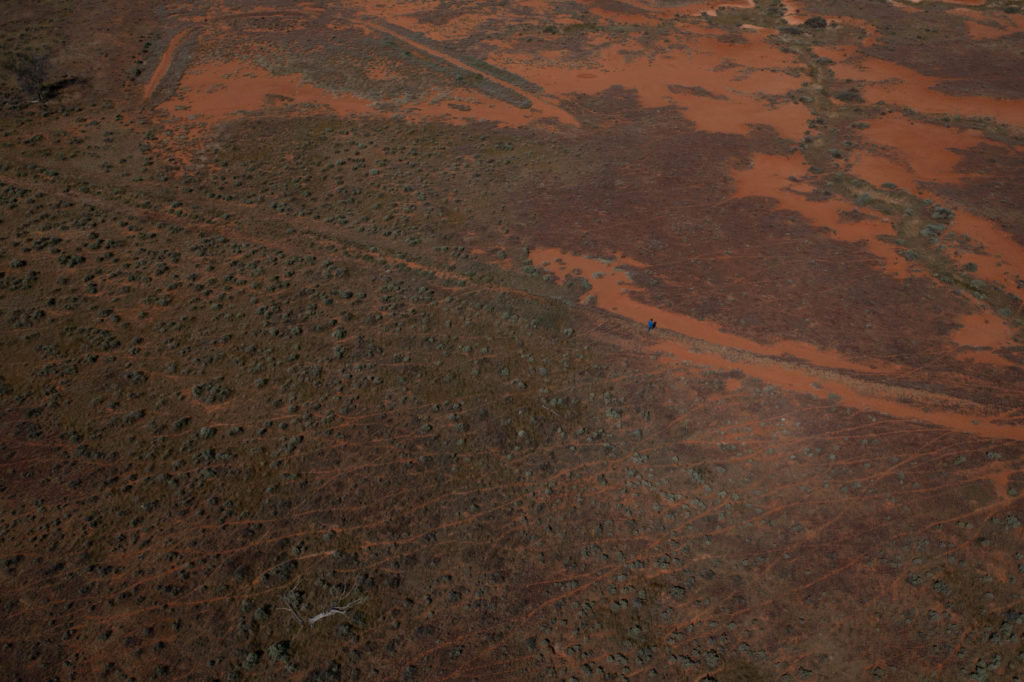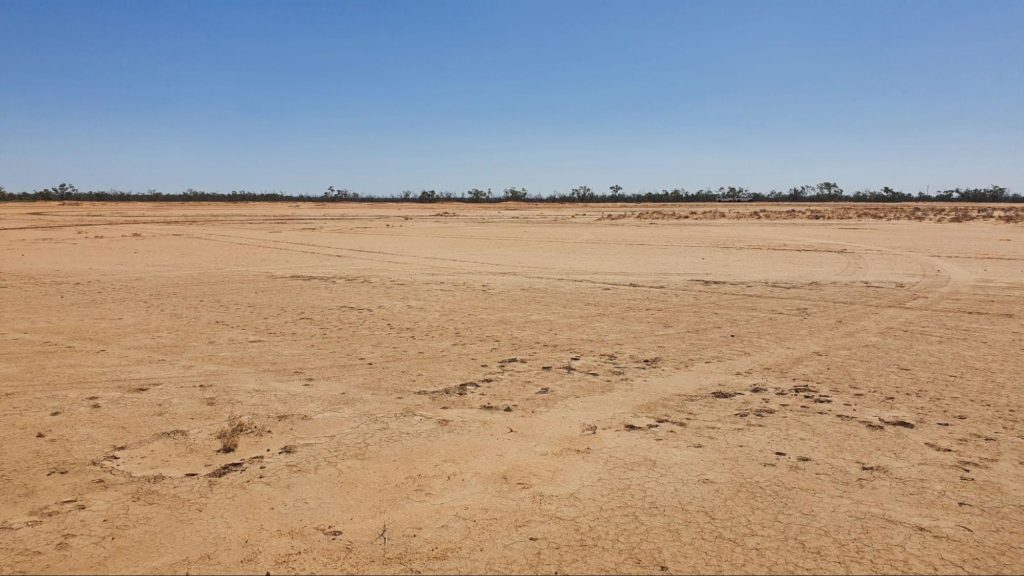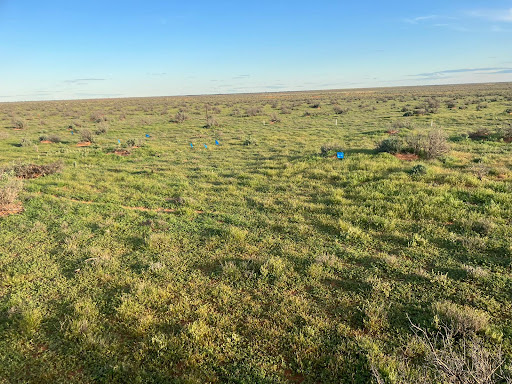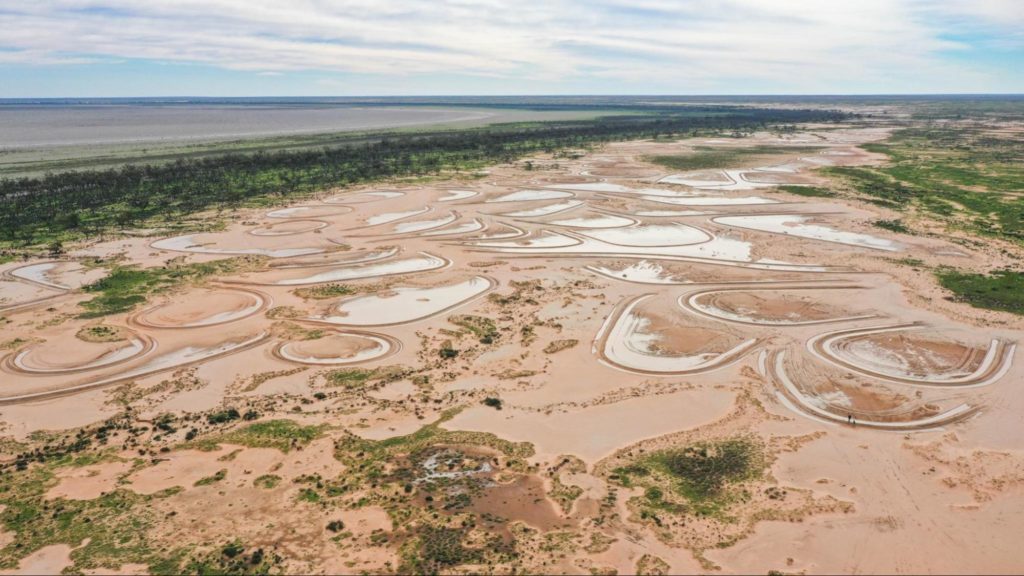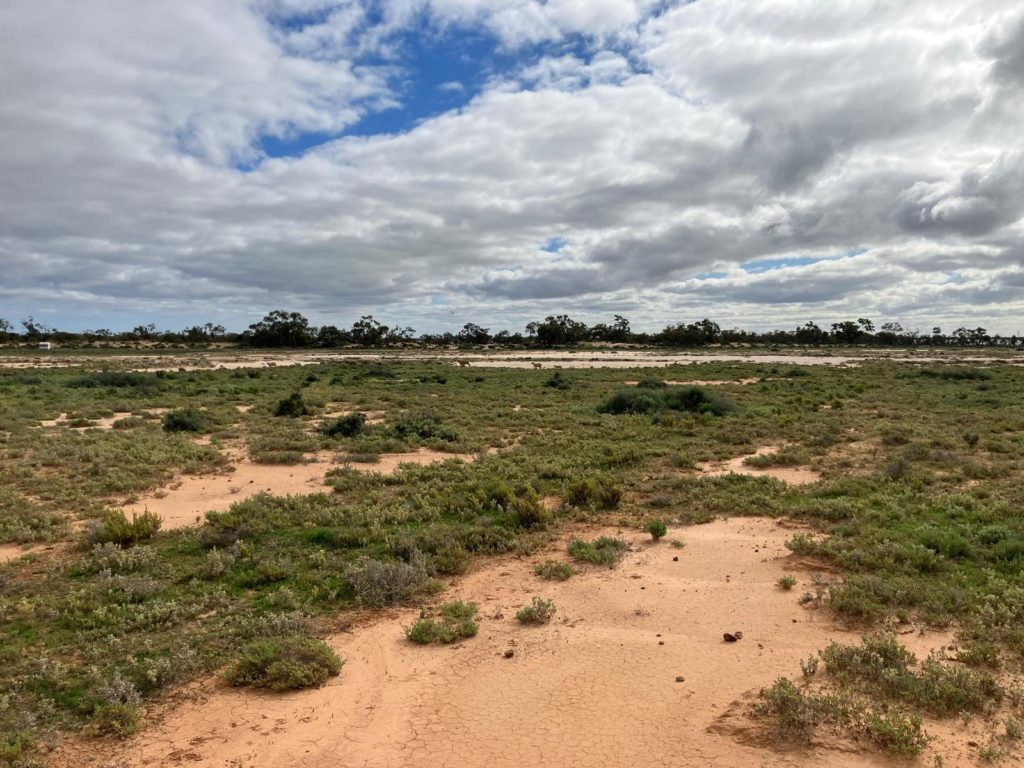Angus and Kelly Whyte at Wyndham Station and Willow Point
Resilience in the Rangelands | UPDATED November 2023
‘We had to redesign the way we functioned as a business in order to get a different outcome. As they say – change equals change – so the more you’re prepared to change, the more change you can expect.’ – Angus Whyte
Angus and Kelly Whyte apply a holistic management approach to two properties, Wyndham Station and Willow Point, in the NSW rangelands 85km north of Wentworth.
Two decades ago, they were frustrated with the increasing amount of work they were doing at Wyndham Station and the increasing degradation of the landscape. Angus says the ‘Low-level set stock management regime in our part of the world just seemed to be taking our landscape backwards and creating more work.’
In 2001, they attended a Resource Consulting Services (RCS) Grazing for Profit course, which was a key motivator for change, and they immediately began to apply the holistic, integrated management approach they learned in the course. This involved creating smaller paddock sizes to facilitate intensive rotational grazing on the property and to match their stocking rate to the carrying capacity of the landscape.
Angus shares that by changing to rotational grazing, moving the animals has become less labour-intensive, and there has been greater plant growth and diversity, as well as reduced erosion. In 2012, their main property, Wyndham Station, was the subject of a Soils for Life Case Study, demonstrating the significant benefits of a decade of improved management.
Building on this success, they now want to create an evidence base that quantifies the improvements in their soil health and business profitability. Angus says ‘It’s not just about Are our sheep fat? or Are we producing enough lambs? It’s much broader than that.’
‘There’s been a direct improvement, but if we can say there’s also been X, Y, and Z improved in our soil and profitability, then we’re putting together a pretty reasonable case as a way to explain to other people so they can say “Oh yeah, that’s something I might be interested in.”’ – Angus
Whilst they continue to manage holistically to drive productivity, profitability and landscape health, the Whytes are also interested in the potential co-benefits of ecosystem services markets. These emerging markets, such as soil carbon and biodiversity, offer the potential to better compensate producers for the work they are doing to improve the landscape. The desire to create an evidence base to help inform producers is what drove the Whytes to join the Rangelands Living Skin (RLS) project.
In addition, a key motivator for the Whytes is encouraging producers to create healthy and resilient businesses and landscapes that the next generation can be proud of. Angus reflects that because of their successful management approach, many of the producers involved in the RLS project ‘have the next generation looking to be involved in farming and our businesses, and that’s not a coincidence.’

(L-R) Kelly and Gus Whyte
Farm Facts
Location
Barkindji Country, Wentworth, NSW
Climate
Hot dry summer, cold winter
Average Annual Rainfall
245 mm*
Agro-ecological Region
Dry**
Property Size
12,500 hectares – Wyndham Station
19,000 hectares – Willow Point (Leased from M R Whyte)
Elevation
30m
*Sourced from MyClimateView.com.au. Farmer reported 260 mm.
**Extreme variability of rainfall is a defining feature of southern rangelands and has a significant impact on the challenges and solutions being explored at Wyndham Station and Willow Point.
Social Structure
Family run
Enterprise Type
Sheep and Cattle breeding and trading, opportunity cropping, planning goats
Landscape
Rangelands
Soils
Self-mulching clays on floodplains to sandy ridges, sandy loams
*Learn more about soil classifications at Soil Science Australia
Practices for improving soil and landscape
Angus and Kelly began implementing rotational grazing and creating smaller paddock sizes in 2002, and they learned to continuously monitor the environment to match their stocking rate to carrying capacity. They regularly review their livestock numbers and trade in and out of livestock, which gives them more opportunities to sell to more diverse markets across the year and manage their risk.
The Whytes emphasise that they haven’t made ‘one single change’ to get to where they are, but a series of changes over time. Angus says that ‘change equals [more] change’ and that since we last spoke to them, things have continued to evolve in managing Wyndham Station and more recently Willow Point.
After about 10 years of rotational grazing, they noticed that their system and results had plateaued and that although rotational grazing creates changing circumstances for each paddock, ‘you can become too fixed in how you run that, and the system comes to expect the change.’ They asked themselves what other changes they could make to bring about genuine diversity through more change and continued improvement. They call this an approach of ‘planned chaos.’ Some of these changes have involved making better use of green grass when it is available and allowing more extended rest so that trees and shrubs can regenerate and produce more leaves. For some paddocks, this could involve a year of rest followed by less intense grazing and shorter rest periods, whilst for other paddocks, this may be a more intensive growing regime.
Taking a ‘planned chaos’ approach means that the Whytes are continuously looking for and monitoring indicators in their environment and business and making adjustments based on what they see. They call this ‘communicating’ with the farm, and Angus says that when planning the year ahead, the only thing not up for discussion is this good communication. They continue to find better ways to monitor different aspects of their business through indicators that relate to the health of the environment, the well-being of the family, and the productivity of the farm.
They have observed significant improvements over the last 20 years, including increased plant diversity and growth and reduced erosion. In addition, they have experienced increased productivity and a more effective use of labour on the farm. These improvements have driven them to discover what was happening in their soil and landscape and why.
Rangelands Living Skin trial practices
As part of the Rangelands Living Skin project, producers are running low-cost trials of various, scalable practices that they hope will offer multiple benefits. The trials include a trial chosen by the farmer (demonstration site), as well as replicated trials across the farms, and remote sensing data to reflect grazing management.
Mechanical Intervention
The Whytes have created plot trials of mechanical interventions to create water ponding areas at Willow Point. Between February and June 2022, a grader was used to construct more than 60 U-shaped earth banks, measuring 500mm high and 2m across at the bottom. These areas were paired with various treatments such as liquid vermicast foliar spray, solid vermicast and biochar.
The mechanical interventions in the landscape aim to encourage water infiltration into the soil and can be used to reclaim scalded country and rehydrate rangeland landscapes. When these areas fill with water, the sodic top layers of soil are diluted, which promotes vegetation growth.
The Whytes were keen to use this method to rehydrate a large clay pan area. Angus emphasises that mechanical interventions should always complement other management techniques to deliver long-term and more significant impacts. While the intervention might only be on 200-300 hectares of a paddock, they have found that the intervention might have a benefit right across the whole paddock.
‘You know, mechanical intervention is wonderful. If it’s not paired with decent livestock management, the benefits will be short-lived. If we can pair it long-term with good livestock management, then we can get significant long-term change.’ – Angus
The Whytes have observed that the ponds have retained a lot of water, and seven months after construction, the ponds are already influencing the landscape. According to Angus, ‘there is certainly an increased growth of salt bushes and other annuals in places where there were previously no plants.’
Income Diversification
One of the key questions that the Rangelands Living Skin project explores is whether the practices trialled by the core producers can help to diversify farm income. The Whytes have diversified their income through trading livestock at different times throughout the year and will continue to diversify this through a goat enterprise, and by exploring ecosystem services markets.
Replicated Plot Trials
Replicated plot trails of biostimulants are being undertaken across the four participating Rangelands Living Skin farms. The replicated plot trials provide an opportunity to investigate the soil and plant benefits of various treatments on a small scale in a scientifically rigorous manner.
The treatments to be applied were selected in collaboration with the core producers, and in this case include biological inputs (bioprimers) and natural soil conditioners (biochar). Each replicate has been randomised to address any potential bias that may present in the results due to variations in the soil or alike.
The treatments at Wyndham included:
- Control – no application of treatments or sowing of new species. This is the reference site to which the other treatments are compared with.
- Bioprimer (Solid) – application of a solid biological stimulant material to existing vegetation/soil. The solid bioprimer was applied by hand at a rate of 250kg/ha.
- Bioprimer (Liquid Foliar) – application of a liquid biological stimulant material to existing vegetation. The liquid biofoliar spray was applied using a 15L knapsack sprayer at a rate of 5L/ha.
- Biochar – application of biochar to existing vegetation/soil. Biochar was applied at a rate of 10 t/ha.
At each site, three replicates of each treatment were established in late Early August 2022 in a randomised, blocked design (Image 8).

Image 8. Trial design sample (Source: DPI, 2022).
Remote Sensing of Grazing Management
Changes in ground cover in response to the improved grazing management (managing stocking rates and resting paddocks) on Wyndham over the last 20 years are being assessed using remote sensing data. Using Landsat spatial data, the total ground cover on Wyndham is compared with similar land types within 10km of the property (benchmark areas), for each season since 1989. This method allows the impact of management to be separated from some of the temporal and spatial variability associated with seasonal conditions and different land types. A positive trend in this difference in cover between Wyndham and the benchmark area from the time of changed grazing management would indicate positive impacts of this change.
Early observations
Within a year of implementation, Angus and Kelly have already seen encouraging results, including ‘significant growth of annual plants around our ponding areas’ and ‘an increased growth of saltbushes and other perennials in places where there were previously no plants.’
While it is easy to see that the landscape is changing with more plant growth and pasture, the Whytes are also looking forward to the scientific studies with project partners to understand other types of soil and landscape change – such as soil carbon, water infiltration, and microbiology – to better understand the value of landscape and soil stewardship practices.
The project team is often in the field collecting data, and we’ll be adding more information about the trial results in 2024. Sign up to our Newsletter to receive updates.
Acknowledgements
This case study was prepared as part of the Rangelands Living Skin Project. The Rangelands Living Skin is a four-year project in the NSW Rangelands co-designed by farming families, scientists and collaborators to evaluate cost-effective practices – chosen by producers – for fostering a productive rangeland system now and into the future.
In this project, four core producers trialled a range of practices to improve landscape health, livestock production and business performance to ultimately achieve greater resilience from year to year. The project will create an evidence base to inform the widespread adoption of practices that benefit soil, plants, animals and people – the living skin of the rangelands.
Led by the NSW Department of Primary Industries and funded by Meat & Livestock Australia, this project is a significant investment in the southern rangelands. The Rangelands Living Skin project is a truly collaborative project involving producers, industry, government, academia, researchers, educators and extension specialists, and carbon aggregators.
Soils for Life gratefully acknowledges the generous contributions of the partner organisations in this project. We also acknowledge that the contents of this case study do not necessarily reflect the views of these contributors.

For more information
Follow us for the latest
If you have any questions, get in touch at [email protected].



